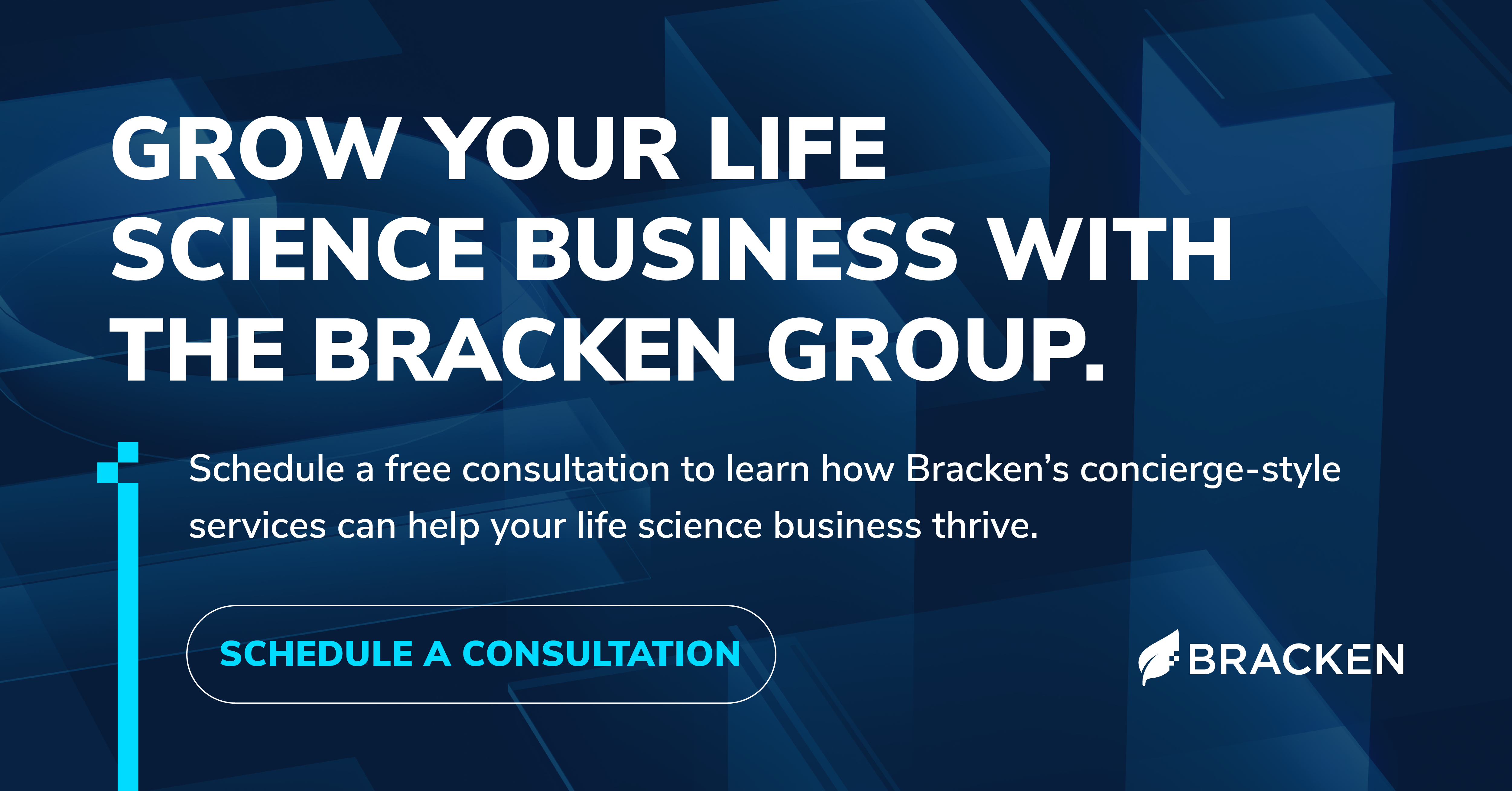The life sciences field is a wide arena. Acronyms far and wide are prevalent in biotech, biopharma, regulatory, and clinical environments. Just like acronyms seen in the life science industry, marketing and advertising services have a vast array of lingo too.
As the Bracken team has expanded, we’ve gained expertise from across the life sciences. From due diligence work to regulatory affairs to radiopharmaceutical knowledge, we have a wide-ranging host of knowledge at Bracken. Some acronyms and terms—NDA meaning “New Drug Application” in the regulatory field vs. “Non-Disclosure Agreement” within business development—may have some overlap. We’re here to share industry knowledge on marketing and advertising and promote creative jargon to ensure all parties are on the same metaphorical page. Here are just a few examples of frequently used phrases within the marketing and advertising space:
Advertising Terms:
- A/B Testing: A randomized process of presenting users with two different versions of an ad or website—an A or a B version to observe which one performs better. Then, metrics are measured to determine if variation A or B is better at meeting key performance indicators.
- Bounce Rate: The percentage of visitors to a website who navigate away from the site after only viewing a single page and not engaging any further.
- Call to Action (CTA): An indication to perform a certain action. Common CTAs include language like, “Click here!” or “Read more!”
- Conversion Rate: The measure of the number of users who converted as a percentage of the total number of users that visited your site. This typically refers to users who interact or engage with the page, like in a CTA. The higher your conversion rate, the more effective your content.
- Clickthrough Rate (CTR): The percentage of individuals viewing a web page who view and then click on a specific advertisement that appears on that page. Click-through rates measure how successful an ad has been in capturing users' attention.
- Remarketing: Engaging with audiences who have already interacted with your brand, to encourage them to take a desired action that may interest them, such as conversion.
- Paid Media: A part of marketing and advertising that requires the purchase of ad space to promote a brand, company, or organization to larger audiences. Brands pay for content promotion to spread their message to wider audiences.
- Sessions: A period of interaction on your website from a unique visitor or particular device. This is a way to “bundle” metrics from a single user or device.
- User: A unique individual who visits your website.
Marketing Terms:
- Branding: The marketing practice of creating a name, symbol, logo, or design that identifies and differentiates a product, company, or website from others.
- Earned Media: Content relating to or originating from a person or organization, published by a third party without any form of payment to the publisher.
- Go-to-Market Strategy (GTM): A tactical action plan that outlines and develops how a company will bring a product to market.
- Key Performance Indicators (KPIs): Measurable, quantifiable values that determine how effectively an individual, team, organization, or company is achieving a business objective.
- Inbound Marketing: Inbound marketing is a business strategy that centers around attracting leads via content and experiences that are curated just for them, thereby pulling potential customers to a company.
- Owned Media: Any online property that is completely under a brand’s control, including any channel, like social media, websites, video streaming, and emails. This means a brand owns all accounts and the media it puts out.
- Paywall/Walled Cardens: A closed ecosystem in which only a limited set of users have access to their software or hardware technology. A walled garden or its service provider has complete control over the published content, applications, and other additional services.
- Search Engine Marketing (SEM): A high effective way to increase your ranking on search engines and attract qualified traffic to your website. Additionally, investing in SEM is a great way to grow brand awareness and increase sales.
- Search Engine Optimization (SEO): A set of practices specifically designed to improve the appearance, relevance, or positioning of web pages in organic search results. A SEO-rich page will utilize keywords, reoccurring phrases, or specific language to rank higher in a web search with the goal of appearing on the first page of results.
- User Experience (UX): How a user interacts with and experiences a product, service, our system. It also includes a person's perceptions of utility, ease of use, and efficiency.
There’s a science to marketing and advertising, too. Bracken has that covered. Want to learn more? Read our case studies and contact us today to learn about working with the Bracken team. We’d be delighted to speak with you!
